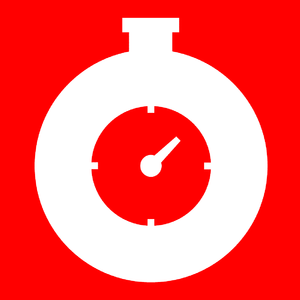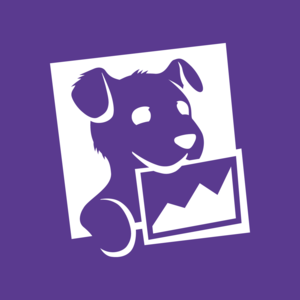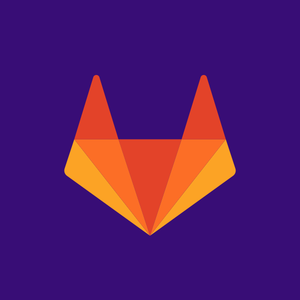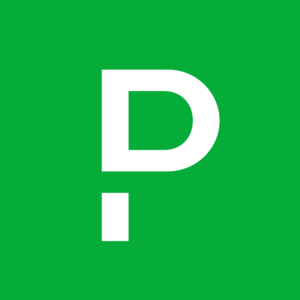
PagerDuty (PD)
We aren’t fans of PagerDuty. Its revenue growth has decelerated and its historical operating losses don’t give us confidence in a turnaround.― StockStory Analyst Team
1. News
2. Summary
Why We Think PagerDuty Will Underperform
Born from the frustration of developers being woken up by unprioritized alerts, PagerDuty (NYSE:PD) is a digital operations management platform that helps organizations detect and respond to IT incidents, outages, and other critical issues in real-time.
- Estimated sales growth of 2.8% for the next 12 months implies demand will slow from its two-year trend
- Offerings struggled to generate meaningful interest as its average billings growth of 3.8% over the last year did not impress
- On the bright side, its software is difficult to replicate at scale and leads to a top-tier gross margin of 84.4%


PagerDuty’s quality doesn’t meet our bar. We see more favorable opportunities in the market.
Why There Are Better Opportunities Than PagerDuty
High Quality
Investable
Underperform
Why There Are Better Opportunities Than PagerDuty
At $13.03 per share, PagerDuty trades at 2.4x forward price-to-sales. This certainly seems like a cheap stock, but we think there are valid reasons why it trades this way.
We’d rather pay up for companies with elite fundamentals than get a bargain on weak ones. Cheap stocks can be value traps, and as their performance deteriorates, they will stay cheap or get even cheaper.
3. PagerDuty (PD) Research Report: Q3 CY2025 Update
Digital operations platform PagerDuty (NYSE:PD) met Wall Streets revenue expectations in Q3 CY2025, with sales up 4.7% year on year to $124.5 million. On the other hand, next quarter’s revenue guidance of $123 million was less impressive, coming in 3.4% below analysts’ estimates. Its non-GAAP profit of $0.33 per share was 35% above analysts’ consensus estimates.
PagerDuty (PD) Q3 CY2025 Highlights:
- Revenue: $124.5 million vs analyst estimates of $125 million (4.7% year-on-year growth, in line)
- Adjusted EPS: $0.33 vs analyst estimates of $0.24 (35% beat)
- Adjusted Operating Income: $35.55 million vs analyst estimates of $26.08 million (28.5% margin, 36.3% beat)
- Revenue Guidance for Q4 CY2025 is $123 million at the midpoint, below analyst estimates of $127.4 million
- Management raised its full-year Adjusted EPS guidance to $1.12 at the midpoint, a 9.3% increase
- Operating Margin: 6.5%, up from -8.7% in the same quarter last year
- Free Cash Flow Margin: 16.8%, down from 24.5% in the previous quarter
- Customers: 15,398, up from 15,322 in the previous quarter
- Billings: $117.8 million at quarter end, in line with the same quarter last year
- Market Capitalization: $1.39 billion
Company Overview
Born from the frustration of developers being woken up by unprioritized alerts, PagerDuty (NYSE:PD) is a digital operations management platform that helps organizations detect and respond to IT incidents, outages, and other critical issues in real-time.
The company's Operations Cloud platform combines several key capabilities: artificial intelligence for operations (AIOps), automation, incident management, and customer service operations. This integration enables teams to quickly identify problems, mobilize the right responders, and resolve issues before they significantly impact customers or the business.
PagerDuty's system ingests signals from across an organization's technology stack, using machine learning to filter out noise and correlate related issues. When critical incidents occur, the platform automatically routes alerts to the appropriate teams based on predetermined schedules and escalation policies. This ensures that the right experts are engaged without unnecessary disruption to others.
A healthcare company might use PagerDuty to monitor its patient portal, automatically alerting on-call engineers when response times slow down. Financial institutions rely on it to coordinate rapid responses to potential security breaches. E-commerce businesses deploy it to minimize downtime during high-traffic shopping events.
The company monetizes through a subscription model with tiered pricing based on features and scale. Its platform integrates with over 700 popular tools and services, making it a central hub in many companies' technology ecosystems. PagerDuty has expanded beyond its core developer audience to serve IT teams, security operations, customer service departments, and business stakeholders across organizations of all sizes.
4. Cloud Monitoring
Software is eating the world, increasing organizations’ reliance on digital-only solutions. As more workloads and applications move to the cloud, the reliability of the underlying cloud infrastructure becomes ever more critical and ever more complex. To solve this challenge, companies and their engineering teams have turned to a range of cloud monitoring tools that provide them with the visibility to troubleshoot issues in real-time.
PagerDuty competes with incident management and IT operations platforms including Atlassian's Opsgenie (NASDAQ:TEAM), Splunk (NASDAQ:SPLK), ServiceNow (NYSE:NOW), and Everbridge (NASDAQ:EVBG), as well as offerings from companies like Red Hat (part of IBM) and xMatters (acquired by Everbridge).
5. Revenue Growth
Examining a company’s long-term performance can provide clues about its quality. Any business can have short-term success, but a top-tier one grows for years. Thankfully, PagerDuty’s 19.6% annualized revenue growth over the last five years was decent. Its growth was slightly above the average software company and shows its offerings resonate with customers.
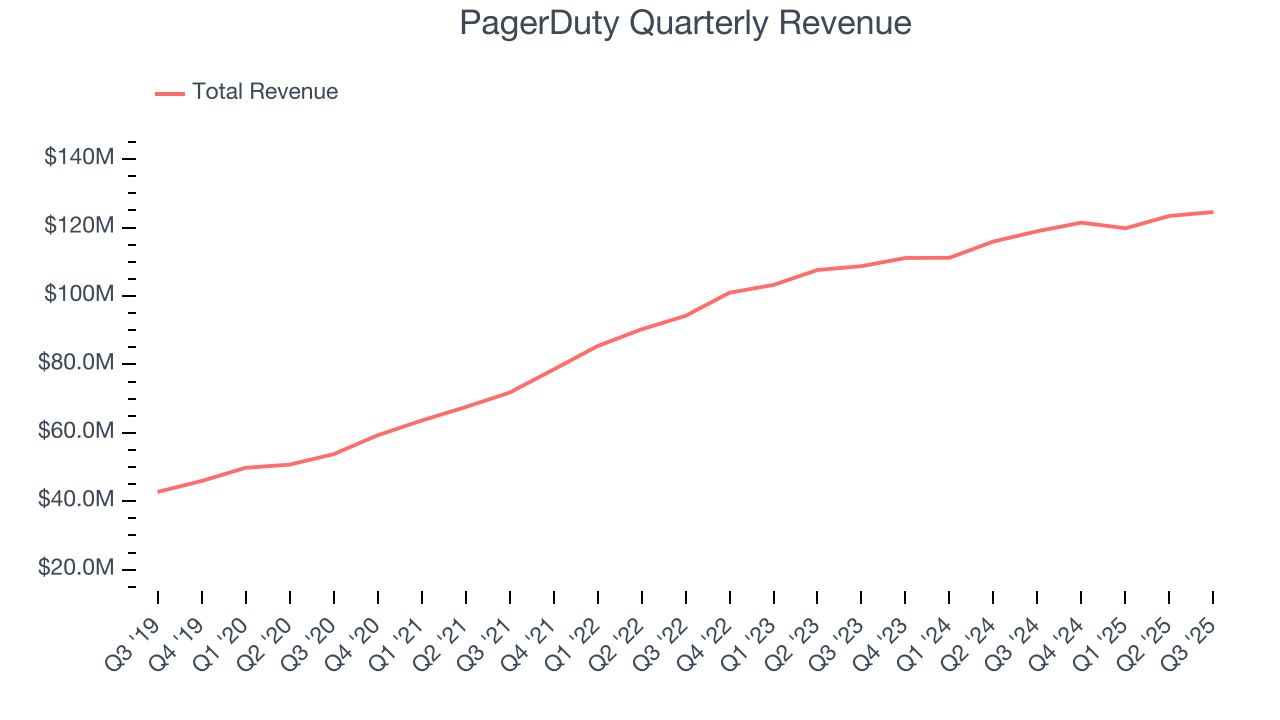
Long-term growth is the most important, but within software, a half-decade historical view may miss new innovations or demand cycles. PagerDuty’s recent performance shows its demand has slowed as its annualized revenue growth of 7.9% over the last two years was below its five-year trend. 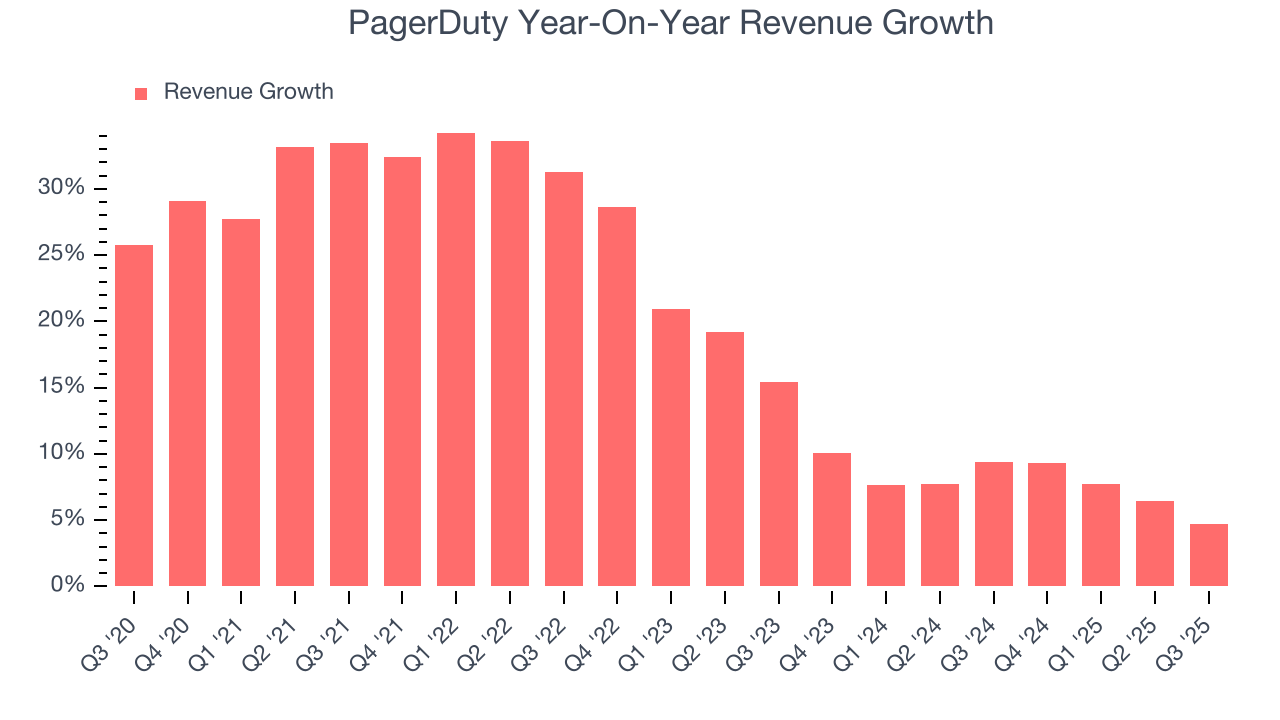
This quarter, PagerDuty grew its revenue by 4.7% year on year, and its $124.5 million of revenue was in line with Wall Street’s estimates. Company management is currently guiding for a 1.3% year-on-year increase in sales next quarter.
Looking further ahead, sell-side analysts expect revenue to grow 6.4% over the next 12 months, similar to its two-year rate. This projection doesn't excite us and indicates its products and services will face some demand challenges.
6. Billings
Billings is a non-GAAP metric that is often called “cash revenue” because it shows how much money the company has collected from customers in a certain period. This is different from revenue, which must be recognized in pieces over the length of a contract.
PagerDuty’s billings came in at $117.8 million in Q3, and over the last four quarters, its growth was underwhelming as it averaged 3.8% year-on-year increases. This alternate topline metric grew slower than total sales, meaning the company recognizes revenue faster than it collects cash - a headwind for its liquidity that could also signal a slowdown in future revenue growth. 
7. Customer Base
PagerDuty reported 15,398 customers at the end of the quarter, a sequential increase of 76. That’s roughly in line with what we’ve observed over the last year.
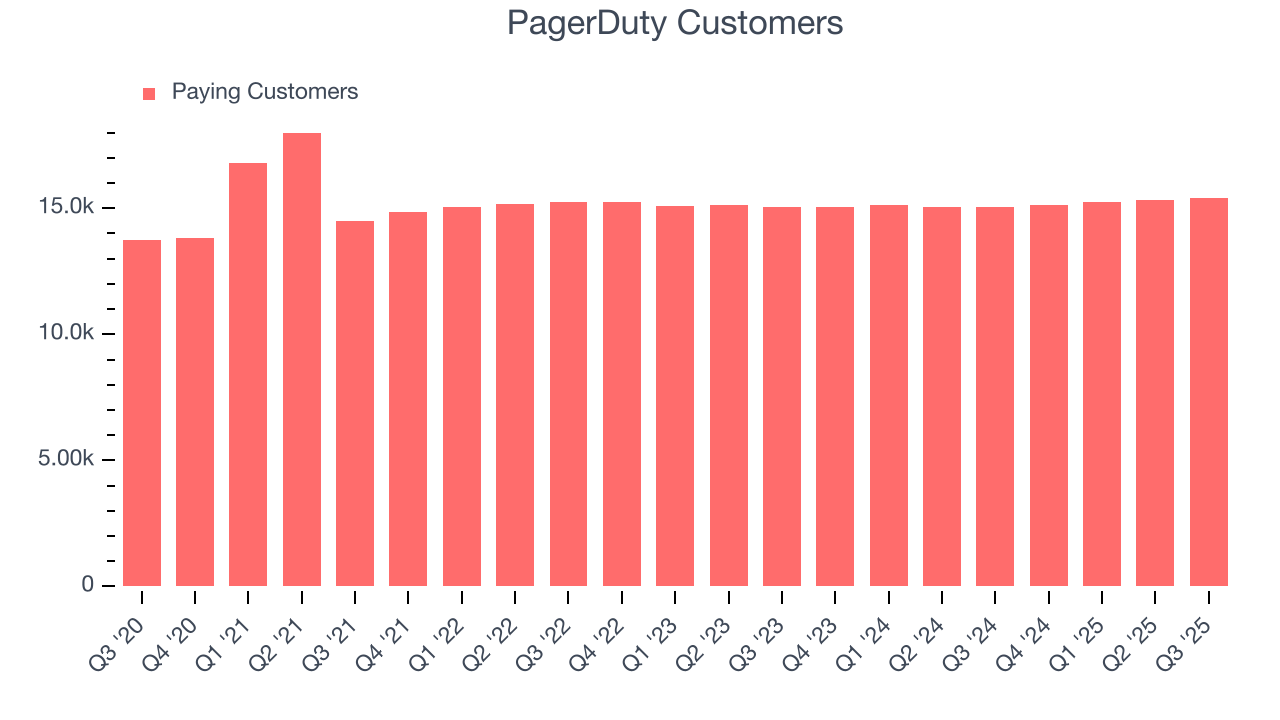
8. Customer Acquisition Efficiency
The customer acquisition cost (CAC) payback period measures the months a company needs to recoup the money spent on acquiring a new customer. This metric helps assess how quickly a business can break even on its sales and marketing investments.
PagerDuty is quite efficient at acquiring new customers, and its CAC payback period checked in at 35.6 months this quarter. The company’s rapid recovery of its customer acquisition costs means it can attempt to spur growth by increasing its sales and marketing investments.
9. Gross Margin & Pricing Power
For software companies like PagerDuty, gross profit tells us how much money remains after paying for the base cost of products and services (typically servers, licenses, and certain personnel). These costs are usually low as a percentage of revenue, explaining why software is more lucrative than other sectors.
PagerDuty’s gross margin is one of the highest in the software sector, an output of its asset-lite business model and strong pricing power. It also enables the company to fund large investments in new products and sales during periods of rapid growth to achieve outsized profits at scale. As you can see below, it averaged an elite 84.4% gross margin over the last year. Said differently, roughly $84.38 was left to spend on selling, marketing, and R&D for every $100 in revenue.
The market not only cares about gross margin levels but also how they change over time because expansion creates firepower for profitability and free cash generation. PagerDuty has seen gross margins improve by 2.2 percentage points over the last 2 year, which is solid in the software space.
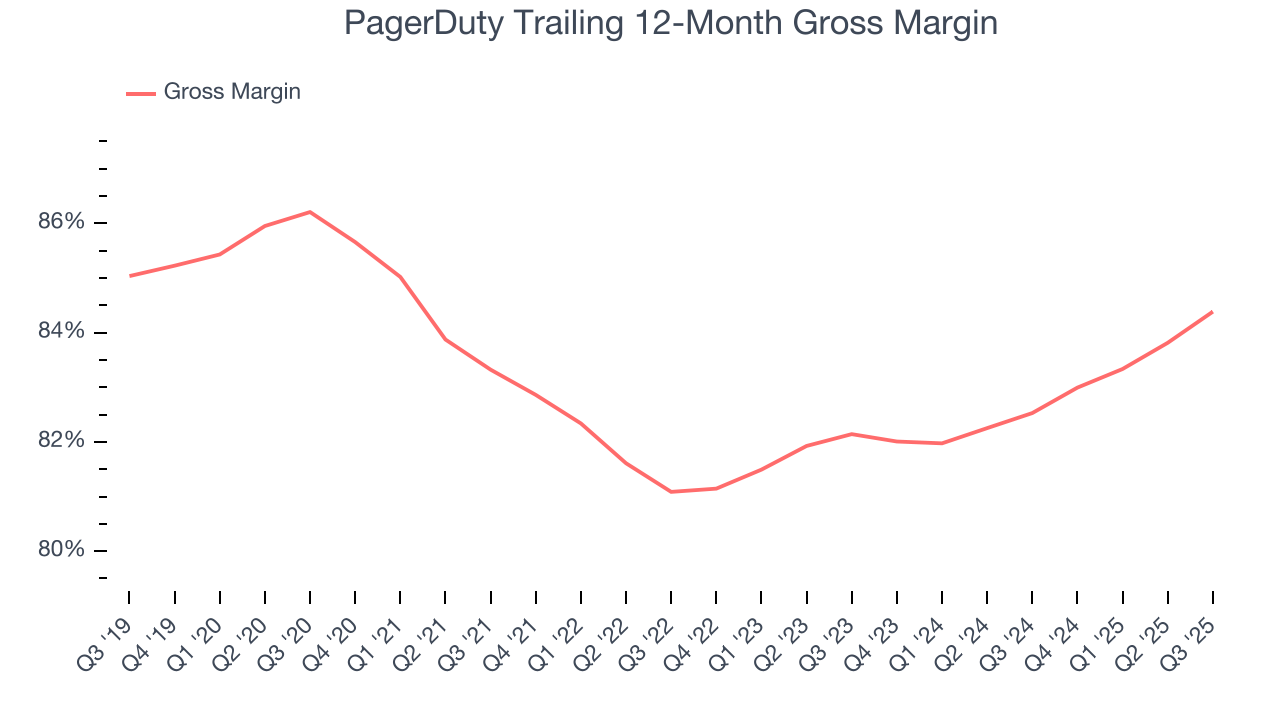
PagerDuty’s gross profit margin came in at 85.3% this quarter, up 2.3 percentage points year on year. PagerDuty’s full-year margin has also been trending up over the past 12 months, increasing by 1.9 percentage points. If this move continues, it could suggest better unit economics due to more leverage from its growing sales on the fixed portion of its cost of goods sold (such as servers).
10. Operating Margin
While many software businesses point investors to their adjusted profits, which exclude stock-based compensation (SBC), we prefer GAAP operating margin because SBC is a legitimate expense used to attract and retain talent. This metric shows how much revenue remains after accounting for all core expenses – everything from the cost of goods sold to sales and R&D.
Although PagerDuty was profitable this quarter from an operational perspective, it’s generally struggled over a longer time period. Its expensive cost structure has contributed to an average operating margin of negative 2.1% over the last year. Unprofitable, high-growth software companies require extra attention because they spend heaps of money to capture market share. As seen in its fast historical revenue growth, this strategy seems to have worked so far, but it’s unclear what would happen if PagerDuty reeled back its investments. Wall Street seems to think it will face some obstacles, and we tend to agree.
Over the last two years, PagerDuty’s expanding sales gave it operating leverage as its margin rose by 15.7 percentage points. Still, it will take much more for the company to show consistent profitability.

In Q3, PagerDuty generated an operating margin profit margin of 6.5%, up 15.1 percentage points year on year. The increase was solid, and because its operating margin rose more than its gross margin, we can infer it was more efficient with expenses such as marketing, R&D, and administrative overhead.
11. Cash Is King
If you’ve followed StockStory for a while, you know we emphasize free cash flow. Why, you ask? We believe that in the end, cash is king, and you can’t use accounting profits to pay the bills.
PagerDuty has shown impressive cash profitability, driven by its attractive business model and cost-effective customer acquisition strategy that give it the option to invest in new products and services rather than sales and marketing. The company’s free cash flow margin averaged 22.2% over the last year, better than the broader software sector. The divergence from its underwhelming operating margin stems from the add-back of non-cash charges like depreciation and stock-based compensation. GAAP operating profit expenses these line items, but free cash flow does not.
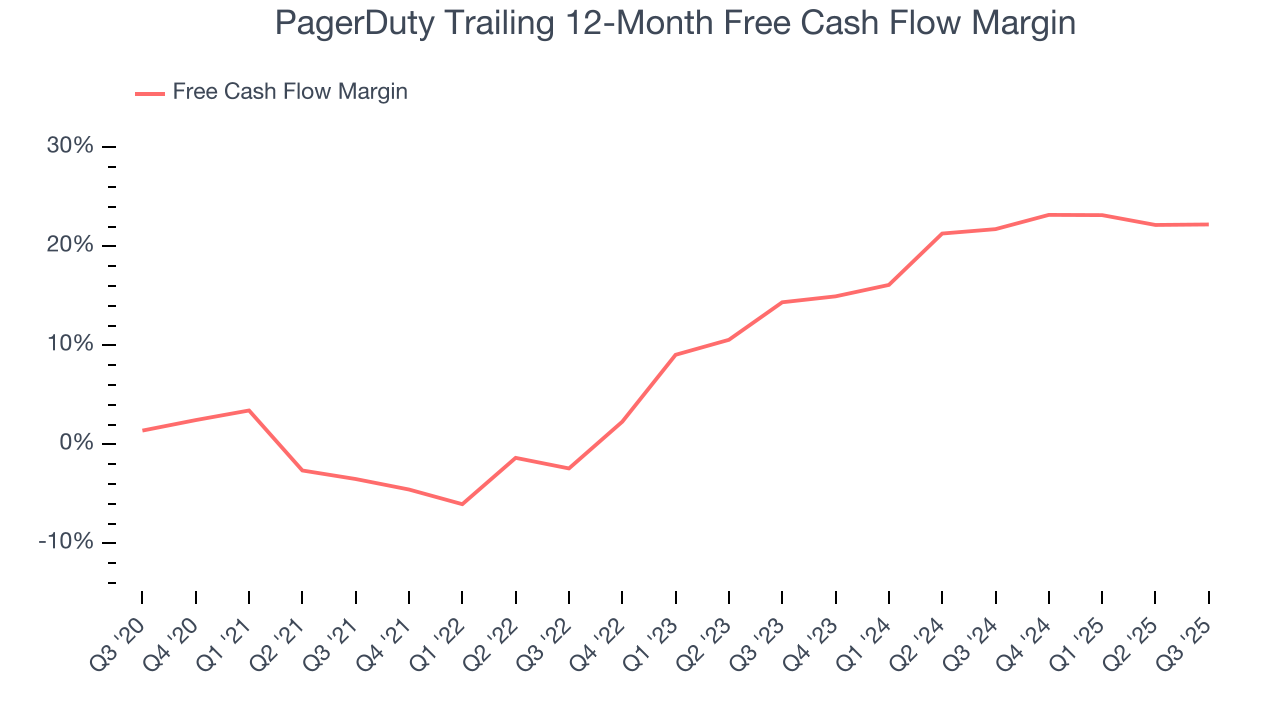
PagerDuty’s free cash flow clocked in at $20.93 million in Q3, equivalent to a 16.8% margin. This cash profitability was in line with the comparable period last year but below its one-year average. In a silo, this isn’t a big deal because investment needs can be seasonal, but we’ll be watching to see if the trend extrapolates into future quarters.
Over the next year, analysts predict PagerDuty’s cash conversion will improve. Their consensus estimates imply its free cash flow margin of 22.2% for the last 12 months will increase to 26.6%, it options for capital deployment (investments, share buybacks, etc.).
12. Balance Sheet Assessment
Businesses that maintain a cash surplus face reduced bankruptcy risk.
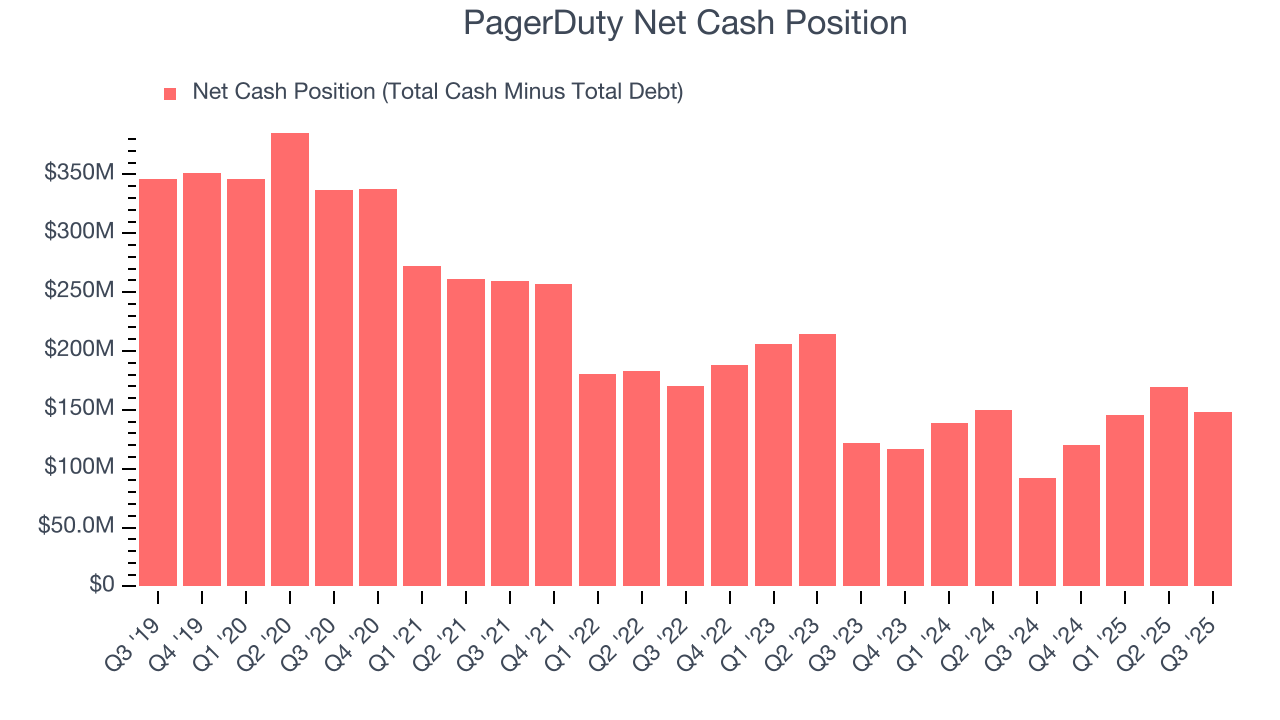
PagerDuty is a well-capitalized company with $547.8 million of cash and $399.2 million of debt on its balance sheet. This $148.5 million net cash position is 13.9% of its market cap and gives it the freedom to borrow money, return capital to shareholders, or invest in growth initiatives. Leverage is not an issue here.
13. Key Takeaways from PagerDuty’s Q3 Results
We were impressed by PagerDuty’s optimistic full-year EPS guidance, which blew past analysts’ expectations. We were also glad its EPS guidance for next quarter exceeded Wall Street’s estimates. On the other hand, its full-year revenue guidance slightly missed and its revenue guidance for next quarter fell short of Wall Street’s estimates. Overall, this was a softer quarter. The stock traded down 7.2% to $14.10 immediately after reporting.
14. Is Now The Time To Buy PagerDuty?
Updated: December 24, 2025 at 9:13 PM EST
Are you wondering whether to buy PagerDuty or pass? We urge investors to not only consider the latest earnings results but also longer-term business quality and valuation as well.
PagerDuty isn’t a terrible business, but it doesn’t pass our quality test. Although its revenue growth was solid over the last five years, it’s expected to deteriorate over the next 12 months and its ARR has disappointed and shows the company is having difficulty retaining customers and their spending. And while the company’s admirable gross margin indicates excellent unit economics, the downside is its operating margins are low compared to other software companies.
PagerDuty’s price-to-sales ratio based on the next 12 months is 2.4x. While this valuation is fair, the upside isn’t great compared to the potential downside. We're fairly confident there are better investments elsewhere.
Wall Street analysts have a consensus one-year price target of $16.75 on the company (compared to the current share price of $13.03).
Although the price target is bullish, readers should exercise caution because analysts tend to be overly optimistic. The firms they work for, often big banks, have relationships with companies that extend into fundraising, M&A advisory, and other rewarding business lines. As a result, they typically hesitate to say bad things for fear they will lose out. We at StockStory do not suffer from such conflicts of interest, so we’ll always tell it like it is.


